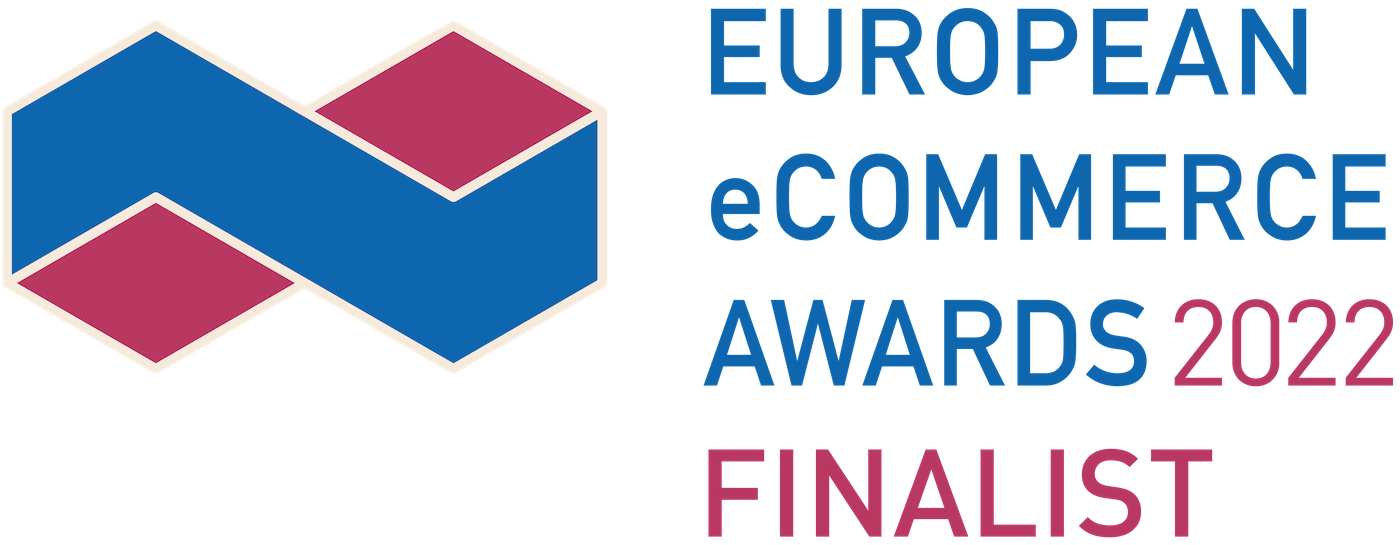Table of contents
In theory, attracting new website visitors is a piece of cake. All you need to do is to invest appropriate funds in Google Ads, Facebook Ads, or long-run e-commerce SEO activities that should effectively attract new users. It’s relatively easy to spend the budget you have, however, your store is supposed to bring profits so you need to aim at developing a website that sells well.
But what do we mean by conversion?
Conversion is a specific activity such as sending offer inquiries by website visitors. When it comes to online stores, every sold item equals conversion. If you want to monitor if the conducted activities bring the intended results, you should thoroughly analyze your conversion rate which will inform you about the number of website visitors who made a purchase in your store.
For example: Over the last 30 days, your website has been visited by 10,000 users and 200 of them have finalized their transactions. In this case, your conversion rate amounts to 2%.
Is this result satisfactory? Well, it depends.
Conversion Rate vs. Industry
You can analyze both the general conversion rate of your store and conversion rates categorized by the source of traffic. This is what the average global conversion rate in 2023 looks like:
- for e-commerce – 2 -4% depending on the industry
- for retail – 1.7%
Source: Convertcart
This is what the average conversion rate is, depending on the source of orders
- Paid search traffic – 53.3%
- Direct 29.2%A
- Affiliate marketing – 8.4%
- Email marketing – 8.2%.
- Paid social media marketing – 0.9%
Source: IRP
Above you can see general conversion rates. Obviously, we also need to mention various industries. The items or services you sell truly affect the achievable conversion rate of your online store. When taking into consideration specific industries, it’s possible to distinguish:
- Food and beverage – 4.6 %
- Health and beauty – 3.08%
- Footwear – 2.8%
- Apparel – 2.7%
- Sporting goods – 2.3%
- Toys and learning – 2.3%
- Home and decor -2.1%
- Electronics – 1.9%
- Luxury apparel – 1.2%
- Furniture – 0.6%
Source: Statista
As you can observe, differences in conversion rates are sizable. In the case of furniture stores, the average conversion rate is seven times smaller than in the case of shops selling foods and drinks. That’s a huge difference!
So how to understand this data?
Should you strive to make your conversion rate similar? Remember that these are just the average results. To be honest, e-commerce requires constant analysis and efforts to improve one’s results as the market is constantly changing which, in turn, leads to the continuous development of customers’ expectations.
Even if your conversion rate is satisfactory, you shouldn’t rest on your laurels. Keep monitoring your store and your market rivals. This is the only way to continuously expand your business and improve your results.
So, what can you do to increase your conversion rate?
Ways to Boost Your E-commerce Conversion Rate
To determine which steps need to be taken to increase conversion rate, you’ve to analyze your website design and elements which require improvement. Maybe you’ve already implemented some of our suggestions described in previous articles but we hope that you’ll find something helpful also in this entry:
Efficient Internal Search Engine
Very often, when I want to find something in a given store, I use Google to access it. I use the command “site:storeaddress.com & searched phrase”.
Why? Because internal search engines frequently aren’t optimized and don’t display given products, even if these products are available in the product range. Spelling mistakes are another problem. If you misspell a given word while entering it into the internal search engine, you probably won’t find the products you’re looking for.
In the meantime, Google displays searched items anyway, as long as the website is indexed. Search predictions are another valuable asset. Take a closer look at the screenshot below to see what exemplary search predictions look like.
A faulty internal search engine may deter users from finalizing transactions at your store.
User-Friendly Navigation
Make sure that the top navigation bar on your website contains all the categories and subcategories that are of interest to users. Don’t force people to click on several subpages to finally find the category they’re looking for – it needs to be easily accessible from the homepage.
And one more important thing – the menu should be clearly visible already after entering the site.
Website Loading Time
In the case of e-commerce, literally, every second makes a difference. You enter a given website and want to order a product but every subsequent subpage loads for ages. So what do you do? In all probability, you simply find another page that isn’t so problematic. And believe us, most users do it too.
As shown in the Portent study, if a website loading time is higher than 5 seconds the conversion rate drops by almost 50%! The expected website loading time ranges between 1-4 seconds and of course the fastest your website the better. So, what’s the result of your online store?
Delivery & Return Options
Not every online store owner can offer free shipping options. If you belong to this group, try to reasonably price delivery and give your customers as many options as possible. Imagine that you want to purchase a given item that costs USD 10 but the shipping costs another USD 10. What do you do? You (similarly to other people) probably resign from shopping. Things would be completely different if the delivery was, for example, USD 3-4.
According to the study, as many as 88% of respondents are more willing to buy if the shop offers free delivery and 58% decide to order an unplanned product to avoid paying for delivery (Source: Meteorspace). Let’s assume that a store offers free shipping from USD 40 and the product you want to buy costs USD 30. It’s naturally better to purchase another useful item instead of paying for delivery.
Free return options are also a great way to convince customers to shop at your online store. According to Metapack E-commerce Benchmark 2023 Report 76% of consumers are not willing to pay for returns.
Include information about shipping time and anticipated delivery date. For some customers, time might e of the essence as they need a product as soon as possible. If they know when to expect a delivery, they can make a more informed decision about the purchase. Just make sure the information is reliable – you don’t want to make your customers believe their order will be delivered in 3 days when in fact it might take over a week. That’s a straight way to get yourself unsatisfied customers who will make sure to let other people know you’re not a reliable seller.
Abandoned Cart Discounts
A website visitor chose a given product and added it to the shopping cart but eventually resigned from finalizing the transaction.
What can you do to convince them to come back and finish the purchase?
Use remarketing to inform this user that the price of this product has been discounted. However, we aren’t talking about offering the same price to all potential customers but about personalizing your offer. In various online stores, it’s also possible to negotiate the price – when trying to abandon the shopping cart, you’re asked how much you’re willing to pay for a specific item.
Payment Methods
Nowadays, cash-on-delivery shopping isn’t as popular as in the past, mainly due to the fact that it’s considerably more expensive. Everyone prefers a different method of paying for services and products.
Some people choose online transfers while others love PayPal. If you don’t want to deter potential customers or clients, give them a choice.
If you run an international online store, make sure your customers can pay in their preferred currency.
Short Path to Purchase
It would be ideal if you could limit your path to purchase only to 2 stages and get rid of all elements that could potentially discourage customers from finalizing their transactions.
On the other hand, it’s a good idea to show your website visitors other products purchased by customers who also decided to buy a given item. This will help you increase the average order size per customer.
Customer Safety
Although it might seem that the need for a secure Internet connection is a standard today, it turns out that there are many websites that don’t care about this element. How to recognize them? Look for a locker icon next to the website address (e.g. in Chrome).
Such a sign probably won’t encourage users to shop at your store but the lack of it might raise a suspicion that there’s something wrong with your store. Meanwhile, it’s possible to obtain an SSL certificate even for free so it’s worth taking care of it. Thanks to it, data sent between the user and the device are encrypted – they cannot be changed or intercepted.
Your website should also contain all the necessary information such as rules and regulations or security policy which signalizes that users can safely buy at your store. Contact details, including your landline number, are a must. Thanks to them, users will be able to easily check whether your store really exists – if no one answers the phone, some people might not place an order.
Make it really easy to contact you via different ways – e-mail, contact forms, phone, or even a live chatbot.
Approachable Account Setup and Login
Make sure that your potential customers are required to provide only their email and password at the first stage of setting up their accounts. The remaining data can be completed while placing an order. Even a longer registration form doesn’t have to deter users from creating accounts, however, you need to refine it. Add essential remarks next to each field to make sure that users know what information to provide.
As a warning, think about the website of a popular budget airline that gives really misleading information concerning the phone number. Consequently, people visit various forums where they ask how to go through the registration stage. This is a huge mistake that may lead to losing a significant number of potential clients.
It also needs to be noted that today it’s a standard to allow users to finalize the transaction as “guests”, without setting up an account or giving the option to create an account at a later stage. Make sure your customers can log in/register using their Google account, Facebook, or LinkedIn profile. It’s a great way to shorten the purchase path and finalize the transaction much quicker.
Comprehensive Product Descriptions
On the one hand, it’s crucial to create product descriptions that are compliant with SEO rules, thanks to which your website is displayed high in the organic search results. On the other hand, content should entice users and encourage them to purchase your products or services.
Focus on the most important assets of your product/service and pieces of information that are relevant for website visitors. If you’re repeatedly asked questions about a specific item from your product range, complete its description with the necessary answers.
Add high-quality images that will show your products from every angle. It’s really important since your customers can’t see the product “in real life”, and have to make their decision based on product pictures. The better your images are the bigger the chance your customers will purchase from your store.
The Takeaway
The abovementioned activities are only the tip of the iceberg when it comes to solutions that can help you increase the conversion rate of your online store. Various steps can bring different results, depending on the type of your website.
Keep developing your store, introducing improvements, and analyzing the benefits they bring. It’ll certainly pay off in the long run.
If you need help with optimizing your online store, let us know! We can help you increase your conversion rate and boost your sales!
















